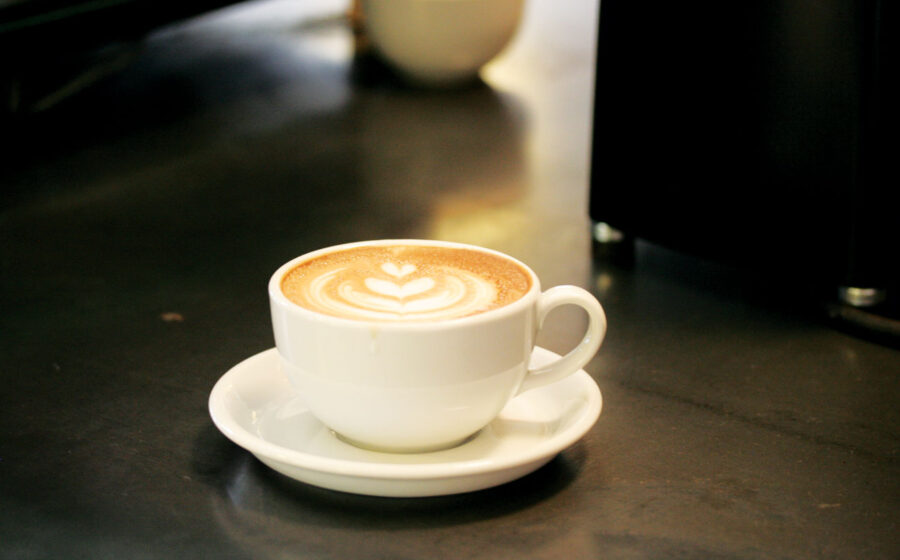[A]s a roaster you have a lot of control over green bean sourcing and quality and from there over the roast profile, but what about after that? Ideally, your customers will taste the coffee like you do when you cup, giving it enough time to reach that perfectly drinkable spot and then observing it change and sweeten as it cools. Of course that’s not how it works. Once the beans leave the roasting facility it’s up to the consumer to decide how to brew the coffee. Because of this, I don’t roast specifically for brew methods. I do, however, recommend coffee and brew method pairings to both cafés buying wholesale and to customers buying bags of coffee in our stores.
My first question to a customer or a café is how do they plan to brew the coffee. (Here I want to recognize that, of course, there’s a whole brewing science as far as what kinds of body or clarity you’re wishing to experience, but that’s a whole different topic.) Will they use an automatic coffeemaker, a pour-over, siphon, Toddy? Each of these will showcase a particular kind of coffee while other coffees might not shine so bright.
Understanding why you bought a certain lot of coffee, roasted it a certain way, and therefore have suggested a specific extraction method can work wonders and allows professionals to relate that information to the customers.
My preferred method for a customer buying a blend might surprise you. I prefer they batch brew. Why? Lets look at a generic blend we’ll call Blend A. I know that Blend A is composed of thirty percent Guatemalan, forty percent natural Ethiopian, and thirty percent Colombian. I’ve worked hard on the blend to maximize the importance of each component making the percentages of each coffee purposeful towards a taste profile. If a customer takes the blend and makes a manual pour-over with, say, eighteen grams of coffee, they run into the possibility of getting a giant fruit bomb. Maybe in those eighteen grams they brewed seventy percent natural Ethiopian and ten percent Guatemalan and twenty percent Colombian. This is just a blend of three coffees—imagine a blend of four or five. The sample size is too small for me to be confident in the cup profile I advertised. However, with 120 grams into a standard batch brew pot my ratio should be much more accurate.
For pairing specific coffees with manual brewers I think about functionality in the café or home. For example, a light roasted natural processed coffee tends to filter slower in a brewer with smaller drain holes as naturals have chaff that might clog the drain. This might consistently create overextraction and would create a bitterness that isn’t inherently in the cup. So, for a natural I might recommend a V60 or Chemex. On the other side, for a washed single origin I might recommend a Kalita wave or Beehive as those have smaller holes and don’t allow the water to just shoot straight through the grounds. It would help give the customer more control over consistency in the cup.
Now on the wholesale side this can be a bit more complex. I view a wholesale account as an extension of my own café. This means that not just my coffee but my reputation are in the hands of another. This is different than a customer getting coffee off the shelf. It’s important to find a balance of having your vision translate to the final cup while at the same time recognizing that café owners will have their own goals and methods of preparation. We like to suggest a specific recipe for how our espresso is pulled. Twenty-gram baskets, forty to forty-four grams out, five second pre-infusion (if possible), and a twenty-six to thirty second extraction is our preferred espresso recipe for our Ozark Copper Espresso. While not all will stick to this or have the capabilities for it, we can at least have a template set for those who are not as familiar with the coffee.
When it comes to manual brewing, we give a loose guideline based on the brew method used, but we leave room for the artistry of the barista. More than hard facts I think talking and having a relationship with the wholesale customer can have the best impact and help present your vision for coffee. Understanding why you bought a certain lot of coffee, roasted it a certain way, and therefore have suggested a specific extraction method can work wonders and allows professionals to relate that information to the customers.
Except those we brew in our cafés, the beans we take such great care of are ultimately out of our hands when water hits the grinds. A few questions about how a customer will prepare them will go a long way to ensuring they are treated right and give that customer the experience we worked for.
—Jon Allen is the owner, roaster, and green buyer of Onyx Coffee Lab in Fayetteville, Arkansas.
















